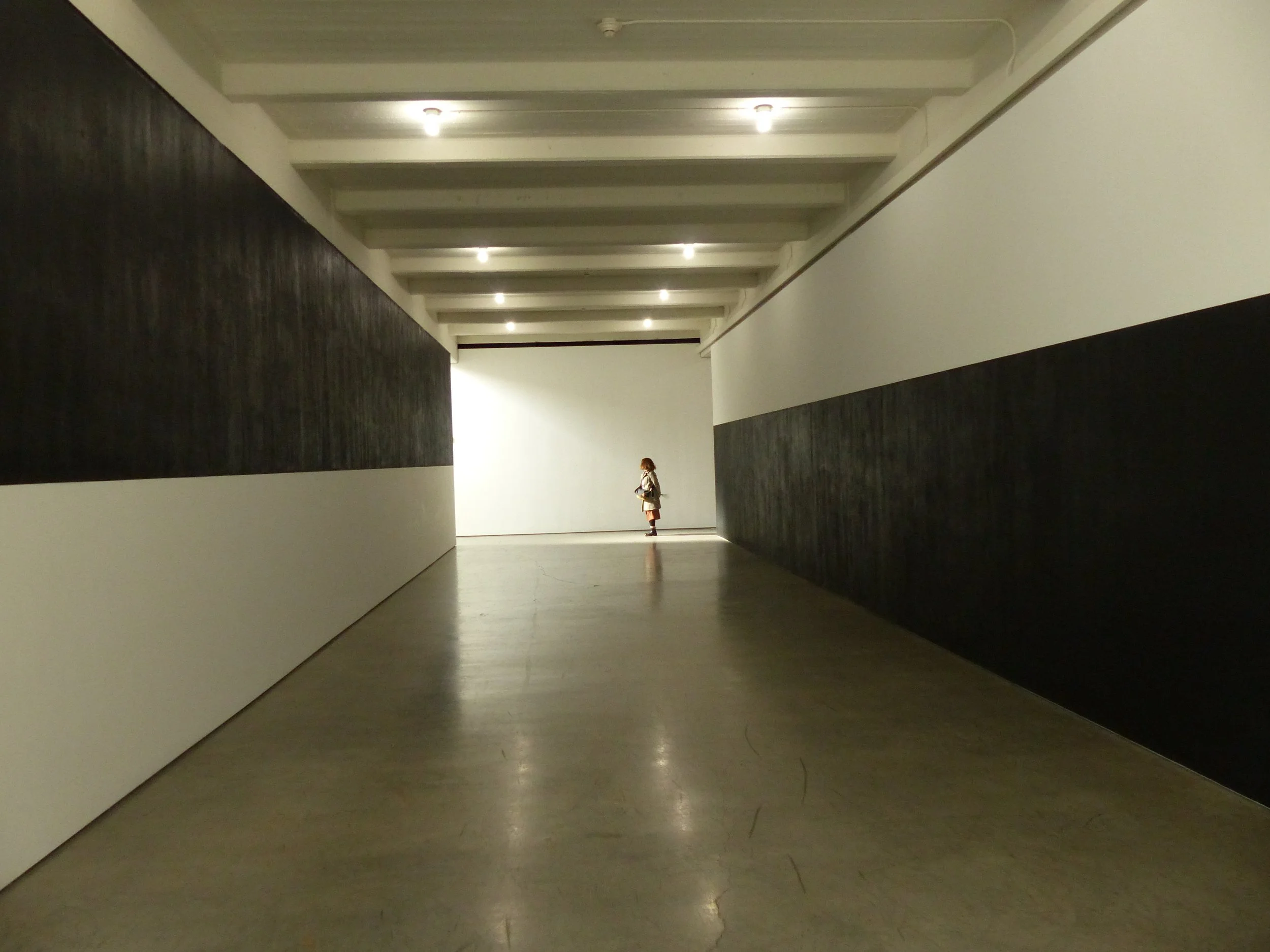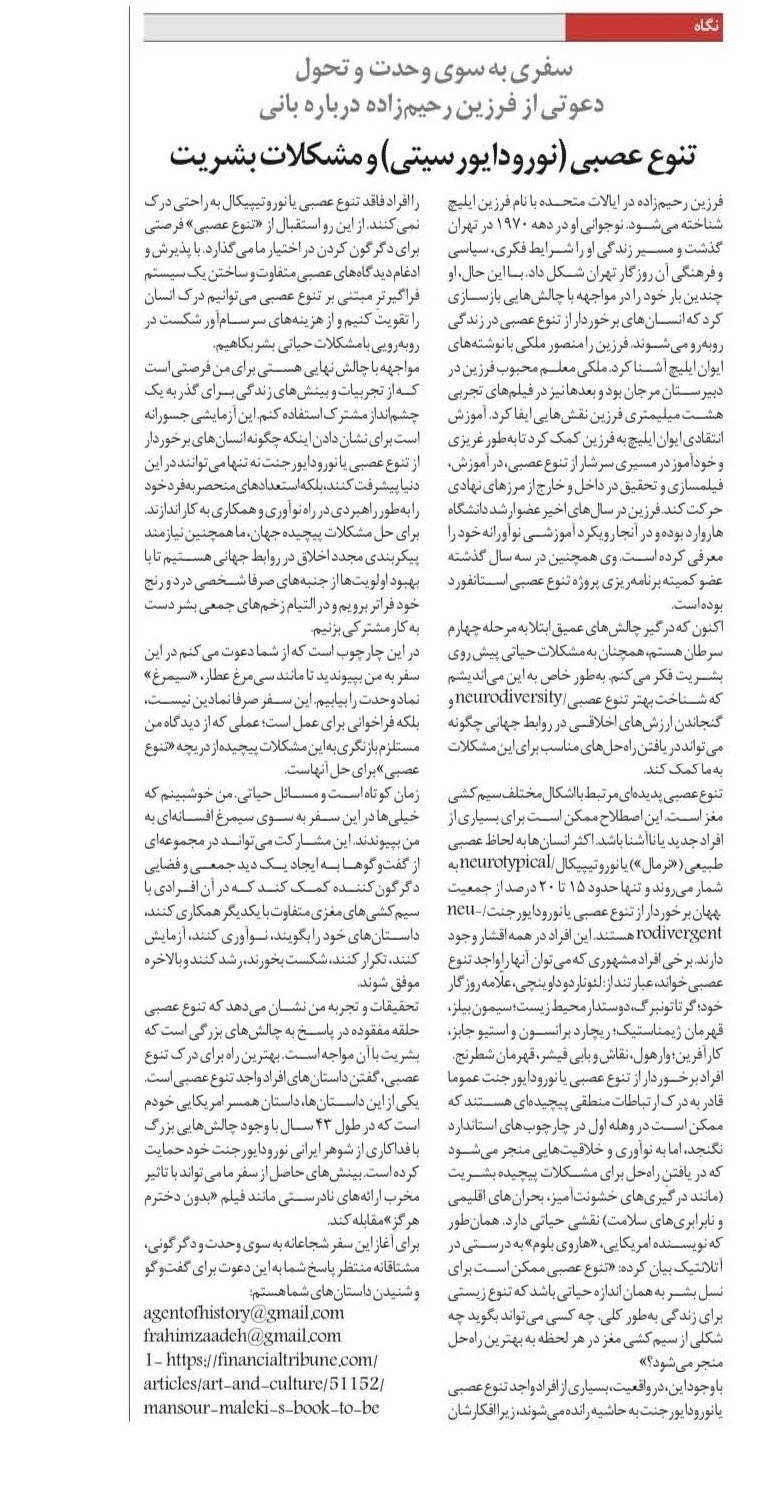
OUR INITIATIVES
Cancer Diplomacy
by Farzin A. Illich
Embracing Neurodiversity: A Journey Towards Unity and Transformation
An Invitation to Action for Peace
As I navigate the profound challenges of a recent Stage IV cancer diagnosis, I find myself compelled to call attention to the critical issues facing humanity today—from health disparities and violent conflicts to the pressing climate crisis. My concern draws attention to how better recognition of neurodiversity and incorporating morality into global relationships can help us find solutions to these problems.
It is within this context that I invite you to join me on a journey to find the Simorgh—the Persian mythical bird symbolizing the quest for unity. This journey is not merely symbolic but a call to action, urging us to reimagine how we tackle these complex problems through the lens of neuroinclusivity.
Neurodiversity is about different combinations of brain wiring. It may be a new or unfamiliar term for many people. Yet neurodiverse people could represent as much as 15 percent of the population. There are neurodivergent people in all walks of life. Some well-known individuals who are generally believed to be neurodivergent include physicist Albert Einstein; polymath Leonardo da Vinci; environmentalist Greta Thunberg; gymnast Simone Biles; entrepreneurs Richard Branson and Steve Jobs; artist Andy Warhol; and chess champion Bobby Fischer.
Neurodivergent individuals tend to see complex logical connections that may not fit standard frameworks, and thus could offer solutions or make observations that can exhibit unusual innovation and creativity. Such creativity can be critical for unlocking solutions to complex problems facing humanity.
As American writer Harvey Blume aptly stated in The Atlantic, “Neurodiversity may be every bit as crucial for the human race as biodiversity is for life in general. Who can say what form of wiring will prove best at any given moment?”
In practice, however, many neurodivergent individuals are marginalized because they are not easily understood by neurotypical (or "normal") people. A pioneering approach to neuroinclusivity could present a transformative opportunity. By embracing and integrating neurodivergent perspectives, we can enhance human understanding and address the staggering costs of failing to build an inclusive system.
Facing my ultimate existential challenge, I see an opportunity to leverage our collective lived experiences, insights, and networks towards a shared vision. This vision is a bold experiment designed to showcase how neurodivergent individuals cannot only thrive in a neurotypical world but also strategically use their unique talents to drive innovation and collaboration. To solve complex global problems we also need a moral reconfiguration of global relations by re-examining priorities.
We must transcend the purely personal aspects of our pain and suffering to join forces in healing humanity’s collective wounds. How do we inspire society to reexamine its priorities amidst escalating global crises? How do we fight cancer and not each other? The answers lie in grand strategies, epistemological shifts, and the creation of new conceptual spaces.
Time is of the essence. I am optimistic that many will join me on this journey toward the legendary Simorgh. Your participation in a series of dialogues will contribute to building a collective vision and a transformative space where neurodivergent and neurotypical individuals collaborate, solve problems, tell their stories, innovate, experiment, iterate, fail, succeed, and grow.
My research and lived experience show neurodiversity to be the missing link in responding to the grand challenges humanity is facing. The best way to understand neurodiversity is to tell the stories of neurodivergent people. Such stories include those of my American wife of 43 years who steadfastly supported her neurodivergent Iranian husband through great challenges. Insights from their journey can counter the destructive impact of misrepresentations, such as films like Not Without My Daughter.
To embark on this courageous journey towards unity and transformation, I eagerly await your response to this invitation for dialogue and storytelling. Contact me at: agentofhistory@gmail.com
In The Conference of the Birds – a Persian poem by Sufi poet, Attar of Nishapur – the birds of the world gather to decide who is to be their sovereign, as they have none.
The hoopoe, the wisest of them all, suggests that they should find the legendary Simorgh. The hoopoe leads the birds, each of whom represents a human fault which prevents humankind from attaining enlightenment. The hoopoe tells the birds that they have to cross seven valleys in order to reach the abode of Simorgh, the mythical bird.
Valley of the Quest, where the Wayfarer begins by casting aside all dogma, belief, and unbelief.
Valley of Love, where reason is abandoned for the sake of love.
Valley of Knowledge, where worldly knowledge becomes utterly useless.
Valley of Detachment, where all desires and attachments to the world are given up. Here, what is assumed to be “reality” vanishes.
Valley of Unity, where the Wayfarer realizes that everything is connected and that the Beloved is beyond everything, including harmony, multiplicity, and eternity.
Valley of Wonderment, where, entranced by the beauty of the Beloved, the Wayfarer becomes perplexed and, steeped in awe, finds that he has never known or understood anything.
Valley of Poverty and Annihilation, where the self disappears into the universe and the Wayfarer becomes timeless, existing in both the past and the future.
A Persian translation of the editorial essay was published on Sunday, August 18, 2024 in Etemad, a reformist newspaper based in Tehran.



